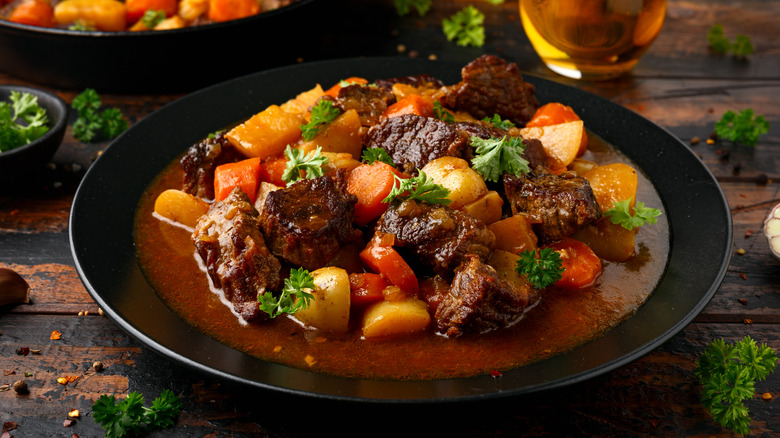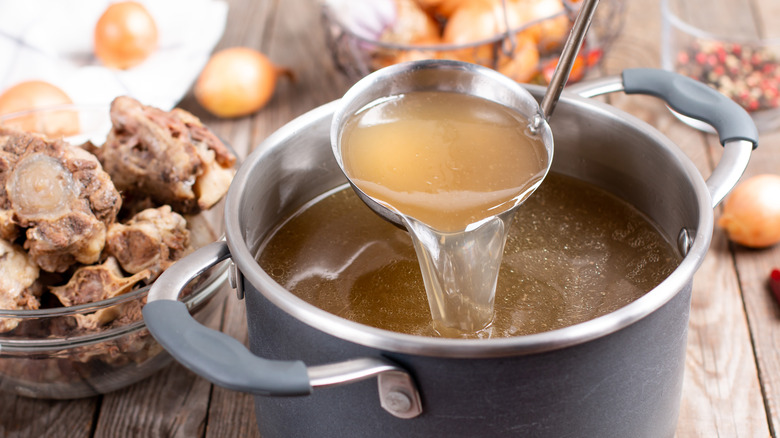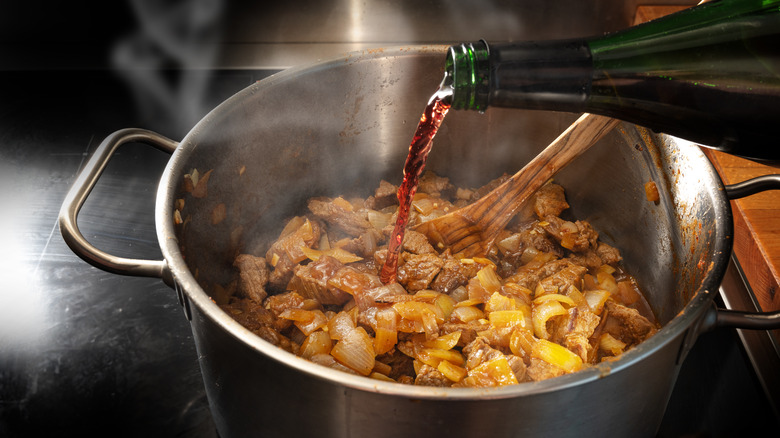Soup Vs. Stew: What's The Difference?
French playwright Molière once famously professed, "I live on good soup, not on fine words." Heavy praise, coming from one of the pioneers of drama. But, we get it, and — if you've ever cozied up with a hot bowl of stew on a cold evening — you get it, too. In fact, the entirety of January has been deemed National Soup Month for this same, inexpressible reason. However, don't get it twisted. It'd be criminal to underestimate the all-weather power of the seemingly simple superhero soup: there's nothing like a chilled gazpacho on a July afternoon.
The ages old debate, though, isn't about how glorious the simple dish is. Folks have been drinking soup like lifeblood since at least the seventeenth century, per Molière. The debate is whether soup is stew, or if stew is soup, like how a rectangle is a square but a square isn't a rectangle ... or is it the other way around? Two very different mouthfeels probably come to mind when you think of beef stew versus chicken noodle soup. But, many soups and stew recipes often consist of the exact same ingredients. So, once and for all, what's the difference?
Soups cook in more liquid
The primary ingredient in soup is broth. Per the authority of Dictionary.com, "a dish is called 'soup' when it's primarily liquid-based. 'Stews' are thicker and chunkier. But an especially thick and chunky 'soup' could be called a 'stew.' 'Broth' is a liquid that serves as a main ingredient for many 'soups,' and can be considered a 'soup' when eaten by itself." So, even though the dividing line between stew and soup might be blurred in some recipes, check out the ratio of ingredients-to-broth for a good indicator that what you're chowing down on is soup (or not).
Stews, by contrast, are held together by more of a gravy than a broth. Many stews are even recommended to be served over rice, potatoes, or polenta, says The Recipe, due to their solidity. The distinction, according to Reader's Digest, is that soups have enough liquid for the ingredients to float in a bowl, and stews sit at the bottom of the dish.
Stews take longer to cook
Household home cook name Pillsbury maintains that soup is a combination of ingredients cooked in liquid, and stew is prepared by stewing. Merriam-Webster defines "stew" as "to boil slowly with simmering heat." It's all about the cook-time.
According to Mental Floss, you can have a steamy bowl of soup in front of you in less than a half hour, but stew requires a slower cook. That's why vegetables and potatoes are usually cut into larger chunks for stews than for soups, it says – the pieces have more time to become tender. Stews also often feature tougher ingredients that would not be able to cook down in soup, says Difference Between, like red wine or tough cuts of beef. Many stew recipes even call for a slow cooker to achieve that signature long-cooked, tender mouthfeel. Since simmering increases thickness, the longer a soup simmers for, the more likely it is to become a stew, per The Kitchn.


